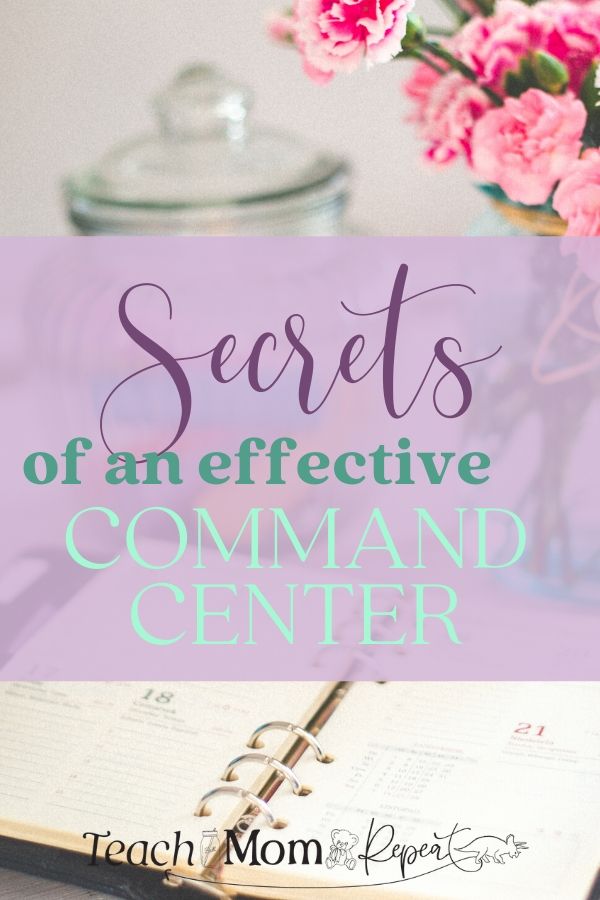
by Carly Black | Jan 18, 2020 | Home Solutions, Organization
Keep it simple. That’s the big secret. Don’t build a command center that does everything or holds everything. It will become one more place that causes you to feel overwhelmed. Keep it simple with a monthly schedule, mail and paper collectors, and weekly meals.
Having both a monthly calendar and a weekly calendar keep us in sync and make for well-managed, smooth days. This is my secret to finding what some might call balance. I don’t believe in balance. Even when there might be “balance” kids can instantly make the moment of balance feel chaotic. Someone took a toy from the other one or the milk is in the glass they didn’t want or they just plain don’t want to do what’s being asked of them. These moments can throw a wrench in any schedule and make a mom feel off balance. But these events are inevitable when our agenda and our children’s agenda do not mesh. Keep track and keep kids informed with a centrally located family command center.
Calendars for Command Centers
My husband and I had a sit down when we first got married to discuss how we would communicate our schedules. We’ve only been married a handful of years and it’s taken us some trial and error to get a system that works for us. You see my husband is a techy kind of guy and keeps everything on his phone. I’m good with that, but if I’m going to remember something I need to see it in writing.
In order to accommodate both of our styles, we use a combined email in iCal and a whiteboard calendar in our command center. The first time we shared our calendars I nearly hyperventilated with all the dots showing up! My husband likes to add EVERYTHING to his calendar, even if he doesn’t wholeheartedly commit to an event. Our solution was to create a combined email so that only the events we needed to share with each other would show up in the calendar.
To help me see these events rather than just dots on my phone I insisted on keeping a handwritten calendar as part of our family command center. I found a large whiteboard calendar that works perfectly. It also helps to have markers in several colors. Teaching has taught me the beauty of color coding for organizational purposes. Another great advantage of using a whiteboard calendar is that it can be magnetic.
A full month calendar is great, but a weekly schedule to list our dinners is also necessary. I recently discovered a weekly meal planner by Everase that sticks to our refrigerator. There is enough space to write out ingredients you’ll be using so everyone in the family, and babysitters, know what not to eat.
Before incorporating this meal planner, my husband asking me what’s for dinner would send me into an anxious panic. With a weekly meal planner added to our family command center, he doesn’t have to ask. This also helps our in-home babysitter from cooking anything I might be planning to use in a dinner recipe or side dish. We learned this lesson the hard way.
Some of the links in this post are affiliate links. Thank you for supporting our website.
Paper Keepers
Well-managed is the only way to feel relaxed and when mom feels relaxed the household will follow suit. If you’re anything like me the mess alone can cause stress. In our house, there is a small section of countertop in our kitchen that seems to have magnetic powers for attracting all things extra. Rather than letting things pile up on the counter, we have incorporated the Sunday basket idea.
I found a 12 x 10 size basket that now sits in the place where all those papers and random items would gather. The concept behind the Sunday basket is to take a moment on Sunday to then empty the basket. This one small weekly task has kept my anxiety and blood pressure in check. It still amazes me how a small change in habit can make a large impact.
Even though we have the basket we still need a place to keep all the paperwork. Forms from preschool, coupons intended to be used, and all those other papers that aren’t quite ready for the file folder or the trash. This is why our command center has a wall-mounted paper organizer for each person in the family. At the start of each month, we go through the organizer and give it a good cleaning.
Kids’ Responsibility
Having a command center that gives each of my kids an area to place papers helps to start an important habit early. My son is always bringing papers home from preschool. As a teacher, I know that this is going to be an ongoing situation. Eventually, he’ll be old enough to take care of his bookbag on his own and I don’t want to miss any important papers. Teaching him the habit of where to place papers is important to start now. This will help me feel less stressed when I start reading about deadlines for field trip forms in the school newsletter.
Using a family command center has so many advantages. In my new course for teacher moms, I share specific ways that you can leverage your command center and more for well-managed days. The course runs for five weeks combining personal coaching with self-paced lessons and actions. Each week covers one topic that will help you take control of the chaos that may be causing a rush of overwhelm the moment you walk through the door. We will address planning the week effectively for meals and schedules, as well as, the best methods for family communication so everyone knows the plan and it doesn’t all fall on mom.
Take a look at the course description on the TeachMomRepeat Academy page or send me an email right now to get started.

by Carly Black | Sep 19, 2018 | At-Home Activities, Home Solutions, Mom Solutions
Parents ask me all the time, “How can I help my child be a better reader?” “What can I do at home to help my child be a better reader?” The simplest answer to this question is READ. Read with them. Read to them. Read a page then have them read a page. READ. READ. READ. Let them see you reading, even if it’s the newspaper, magazines or work emails. Show them that reading is a life skill. This really helps them to understand why it’s important to learn reading skills.
When we discuss reading accountability at the start of the school year I share an infographic with students that illustrates the importance of reading. It explains that reading for at least 20 minutes a day during the school year will expose them to over a million words. Exposure to words is how we all get better at reading. Vocabulary is key. Knowing the meaning of words allows us to comprehend what we read. Knowing strategies for figuring out unknown words while we read is also a skill good readers possess.
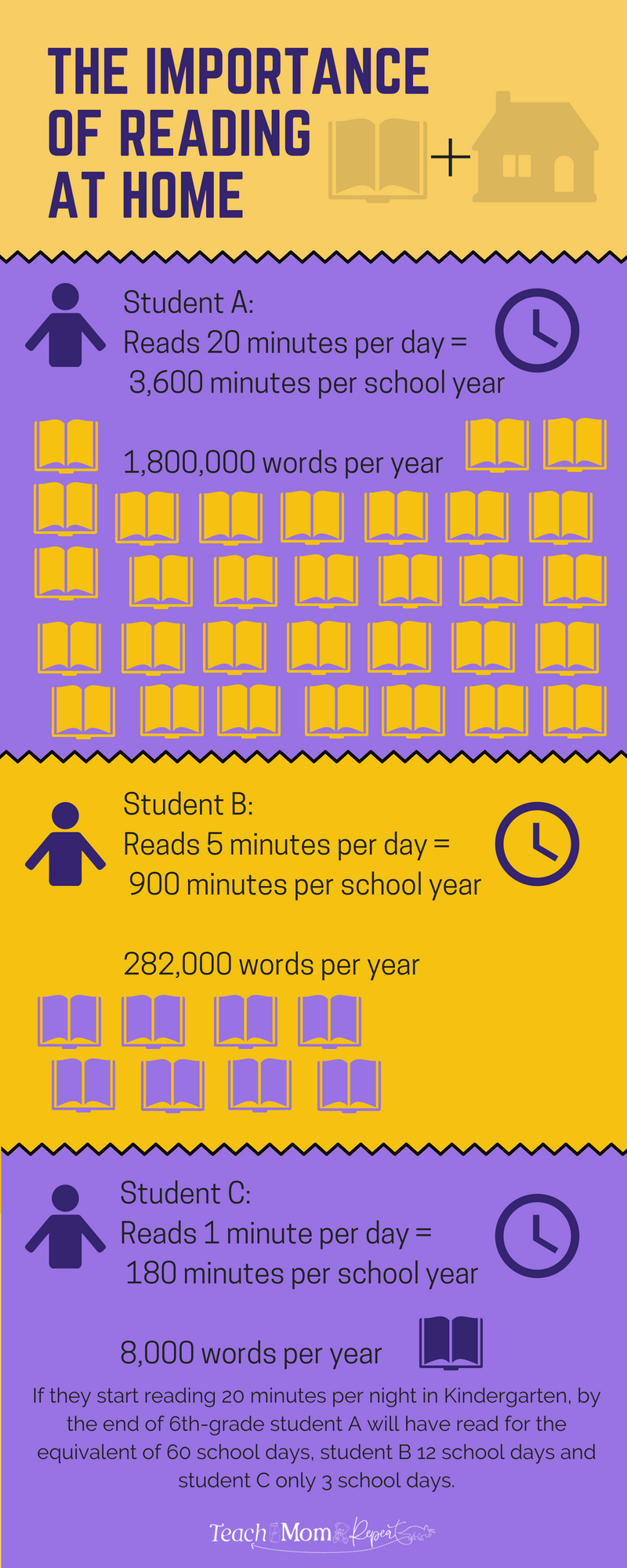
Some of the links found in this post are affiliates. This means if you make a purchase after clicking through we will receive a small compensation at no extra cost to you. Thank you in advance for your support and please know that we only endorse products we use and love.
So the simplest way to become a better reader is to practice it. Just like any other skill. Professional football players still show up to practice because even they can become better at their game. (Unless you play for the Browns!) I share a personal example with the kids that demonstrates even really good readers still need to look up unknown words.
When I read Wonder I had never heard the word precept before; I understood the concept from the story but had never known the meaning of the word. Once I looked it up I realized that my understanding was slightly off and with the true meaning I understood the author’s intent more clearly. Has this ever happened to you? Share that with your child or students. Show them there is always an opportunity to learn new words.
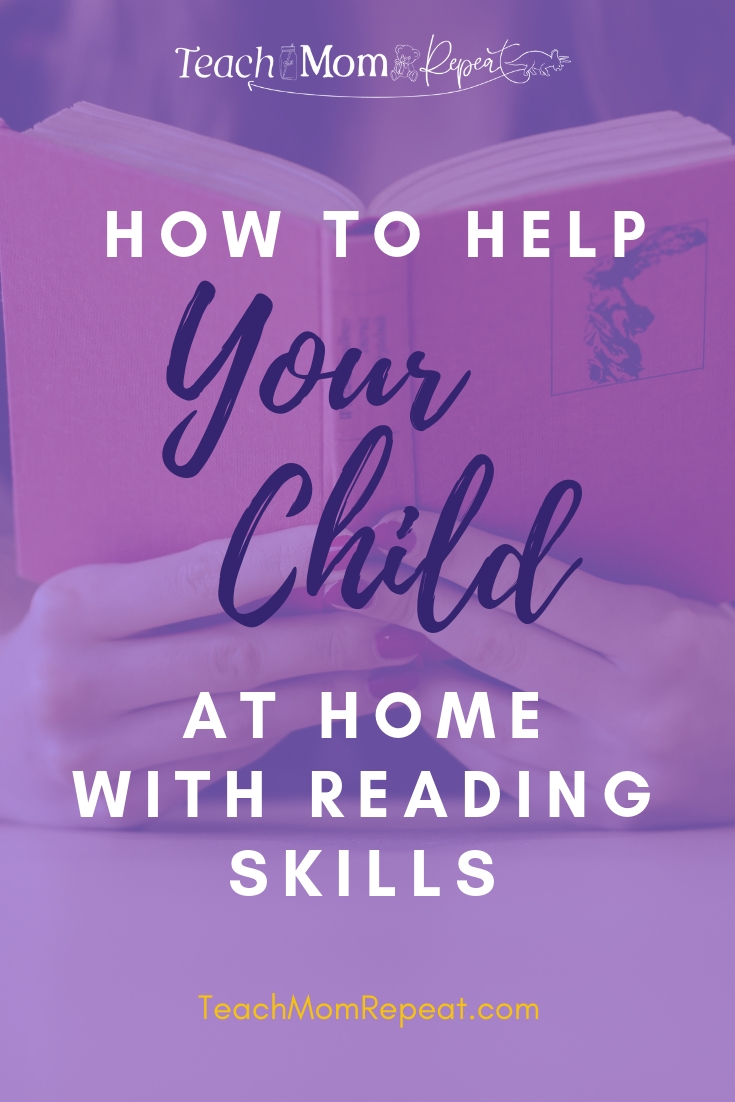
While reading at home is an important way to become better at reading it’s not the only way to help increase reading skills. Here are 3 activities to practice with reading, as well as a few websites and apps that can help.
1. Depth of Knowledge
The simplest comprehension questions ask us to recall important facts. If we can read something and then share the important parts then we have successfully comprehended the story. However, students often struggle to determine what’s important and what’s just part of the story. Characters and their actions that move the story forward are important. If a character stops to buy candy at the gas station it could be to show us that they have a sweet tooth, or share insight to the setting, or to have them interact with another important character. If they simply stop to buy candy and move on then there isn’t much important in that. However, students who connect to behaving similarily can feel like it should be important when it’s not.
Ask your child to recall the important parts of the story from the chapter or section that they just read. If it sounds like it may not be important to the overall story probe them for why they feel that was an important part. If they can defend it to show significance this is great practice for comprehension.
Being able to articulate why a character made a decision or acted in the way they did helps students see the big picture.
2. Vocabulary
If students are reading out loud and stumble on a word saying it for them is good. But then ask if they know what it means. Sometimes we just need to hear a word in order to recognize it; making exposure to words such a vital part of becoming a better reader. If they can’t tell you the meaning ask them if the context around the word can help them figure it out. Still unsure or can’t figure it out? Looking up the word in the dictionary is necessary. Find a place in the house where you can write these words so your child will see them daily that can also help. It takes several times seeing a word and thinking about what it means before we add it to long-term memory.
A few websites that are good for simple word practice include:
FreeRice.com
Vocabulary.com *also has an app called PowerVocab
There are also several phone apps that are free word games. Any word game that is not just spelling words will help increase vocabulary. One that is great for middle school is called The World’s Worst Pet. It’s a strange name for an app, but it has helpful games to learn new words. You can also choose the level of words and increase as kids gain more knowledge.
3. Reading Websites
There are several websites that provide reading practice for kids whether they are in a classroom or at home. Often they require a login and have paid versions, but they also usually allow for free features as well. Here are some of my favorite sites:
ReadWorks.org is geared towards teachers, but their Article-A-Day option is great for at home practice. Many of the sites are geared towards teachers who use these in their classrooms, but it’s just as easy for a parent to set up an account.
FunBrain.com is a great site for books online and reading games. They offer searches by grade level from Pre-K to 8. There are also vocabulary games as well as other subject areas available.
LearnOutLoud.com is a great place to find free audiobooks. Titles are mostly classic books, but those can be very exciting. When listening to an audiobook it is always best to have the physical book to look at while listening. This helps kids engage with the vocabulary.
Newsela.com is a current event website that allows students to read nonfiction at their level. The site is geared for teachers to use in their classrooms, but this can be accessed at home as well. You will need to create an account to access the content. Although it’s not the site’s intent, parents can easily create an educator account and add their child or children to a class you call Home. If your child’s teacher is already using this site then ask if they would assign articles for your child to practice at home.
There is a navigation tool on the left that allows you to choose a child’s level by grade and then narrow by skill. If your child’s teacher has expressed a specific area they need to practice this is a great way to zero in on that particular skill. Kids can search for a topic that is of interest to them, which will help them engage with the reading. After each article, there is a quiz for students to take. You can track their progress in your account and celebrate their growth!
Finding support for helping our older children be better readers can often be a difficult task. There is a plethora of support for young, emergent readers but there are very few options to help our tweens and teens. It’s assumed that by the time they get to be this age they are fluent readers, but that’s not always the case. Books can often be a turn off for older students if they haven’t been able to find one they enjoy. The resources above should help to make reading easier for them and an activity they can hopefully enjoy. If you’re looking for popular book suggestions here are 50 for the secondary student.
Teacher friends, share your greatest resources that you suggest to help parents help their children.
Moms, what is your child’s greatest struggle with reading? Share the strategies you’ve used at home that have helped. Want to receive great mom resources and freebies straight to your inbox? Drop your email in the form below.

by Carly Black | Jul 30, 2018 | Home Solutions, Mom Solutions, Organization
Summer is winding down and the stores have already stocked the shelves with school supplies. This will be my first school supply shopping trip where I will need to follow a list not created by me. My son is entering preschool in the fall. It’s adorable how he tells people he’s going to work but he really means school. #teacherparentproblems
Because this is my first time starting the school year as a teacher and a parent of one school-aged child things are a little different. My entire morning routine is going to change. The first week or two I’ll be running on those start of the school year fumes. But eventually the teacher tired is going to set in and my son’s new sleeping schedule will make him irritable making us all want to press snooze. This is why I’m putting together a Make Over Your Mornings email challenge that will begin after the Labor Day holiday. You can learn more about it by signing up below.
Organizing my mornings will only be part of what needs to change. Thankfully we won’t be looking at any homework time in the evenings with a preschooler, but some of you may be in the same boat of added “to dos” this school year. As a middle school teacher, I’m well aware of the changes that come with students starting school-sponsored sports teams. The added amount of homework. An increase in the number of academic classes and teachers to student schedules. All of these are big changes for kids, and for parents.
This is why I have teamed up with my friend Amy from Organization Boutique. As a parent of middle schoolers herself and an expert on organizing, Amy shares how parents can prepare for life in middle school. My added teacher perspective ensures you can feel confident and ready for the changes that come with starting middle school.
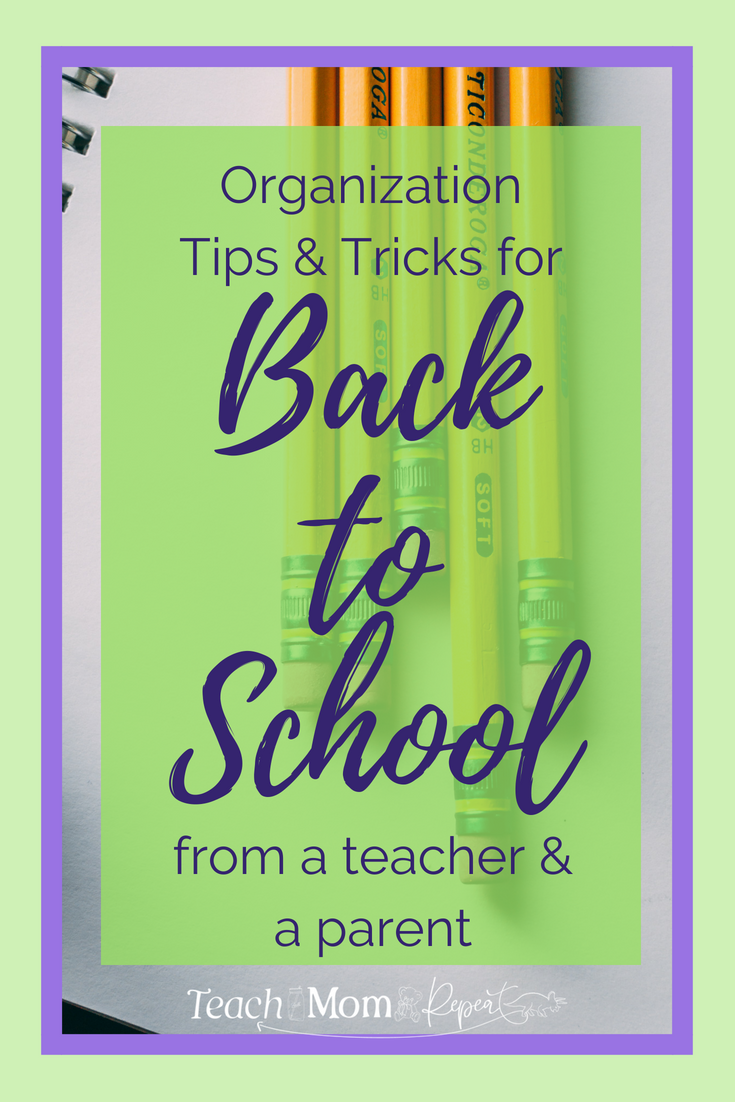
Why Students Need Organizational Skills
Look at how many people are searching for time management tips. It’s so much easier to learn when you are younger and have fewer responsibilities. Not to mention how it can prepare for high school, college and beyond. Many job postings want to hire people with strong organization skills. Parents and teachers can’t always remind them of what needs to get done and how to do it. Taking on responsibilities helps build self-esteem and confidence.
Organizational Skills = More Efficient + Less stress
Time Management Skills for Students
Teacher Advice: Start with the class schedule. Most districts offer a time for students to walk their new schedule. Specifically, the incoming grade that is new to the building. This is a great time for students to familiarize themselves with the school building. Take notice of the distance between classes and the student’s locker. Students should work out the times they will have to stop at their locker and which materials they will take with them at each stop.
Buying materials for middle school might look a lot different than elementary. There really aren’t a lot of supplies needed. Teachers may ask for items they will collect and use as a community supply rather than expecting students to keep track of them individually. So stick to the list! Avoid your child having extra materials that might be distracting during class time or clutter their lockers.
Parent Advice: Use a paper or digital calendar/planner to plan long-term projects and keep track of activities outside of school. Have your child schedule out their school hours, activities, chores, and any other planned events. This will help them see how much free time they have so they know where the best time to schedule homework and anything else that comes up. Have them follow the schedule for a week and then talk about how it went and make any needed adjustments. Keep doing this on a weekly basis until they are confident in their planning skills.
Stop procrastination in its track! Many parents have been up until midnight helping their student finish a project they just started that evening even though they knew about it a month before. Teach your child to plan in advance. Have your child write out all the steps they will need to take to complete a long-term assignment, then schedule each step by putting it on their calendar with a deadline.
Don’t be the alarm for your kids. This may take a lot of time and effort depending on your child’s personality. Some are naturally early risers and don’t have a problem waking with an alarm. Others are heavy sleepers or slow to wake and may need an extra loud alarm clock or to have the alarm across the room to avoid snooze.
Lockers
Teacher Advice: You might be a teacher if you roll your eyes while walking down the locker decorations isle. Seriously, why do kids need carpet in their lockers? Ok, the chandelier lights are kind of cute and much more practical. The shelves that you can add are definitely a great idea! I also like the magnetic containers for holding loose pens or pencils.
Some schools, like mine, provide a color coding system for class folders. This makes it easier to organize the locker by placing materials in the order they will be needed. For example, if books, folders, and notebooks are placed together, spine facing out vertically, in the order of class period from left to right students can keep them in that order throughout the day. Each time they grab a set of materials from the left they should return them to the right. This will cycle materials keeping them in order. Using a strategy like this from the start will hopefully keep the locker clean and homework where it belongs.
Parent Advice: Learn from my mistake – buy a locker shelf to help organize the locker. When attending the orientation day before school starts, most of the locker prep revolves around learning the combination and adding decorative accessories. Students don’t have all their books yet so it’s just putting some supplies in there. I didn’t really think about how much other stuff needed to be stored in the locker and my son’s binders and folders were destroyed because he needed to stack so much in it. He literally brought one “binder” home at the end of the year and it was just the front cover.
Extra Clothes and Lunches
Teacher Advice: Most schools will provide or suggest students keep a daily agenda. It’s a good idea to mark each day that will require Gym clothes or sports practice clothing. Especially considering these are not always year-long activities. Seasons change, quarters change. It’s important to have these dates marked ahead of time.
Another question to ask on Open House nights is where to keep extra bags at school. For example, our football players have a special place to keep all their pads and equipment during the school day until it’s time for practice. If the bag isn’t going to fit in their locker find out what the expectation is for students.
Lunchtime in middle school is often precious social time. Which is why teachers can find it effective to revoke this time as a way to motivate students to complete assignments or show better behavior in class. A working lunch doesn’t always need to be a punitive though. Encourage your child to talk about what lunch looks like for them. Everyday! It can change every day.
Parent Advice: Middle-schoolers should be responsible for remembering to take gym/sports clothes to school and to bring them home for washing. Have your child create a checklist posted to the door they exit. It serves as a double-check that they have everything for school and after-school activities without you needing to remind them.
You may want your kids to plan out their outfit the night before or the beginning of the week. So far my kids have been pretty drama-free with clothing but I remember stressing out about school clothes. Pre-planning can help but it’s not a miracle-worker. Sometimes preteen/teen hormones win.
Middle schoolers are old enough to be able to pack lunches on their own. Just double check that it’s not filled with Doritos and Oreos!
Setting up lunch prep areas in the pantry and fridge with pre-portioned servings will help make packing lunches easier. Your child can help prepare the portions at the beginning of the week. They are more likely to eat it if they’ve helped in the process.
Homework Tips
Teacher Advice: Homework is a hot topic in many educational conversations right now. There are a number of schools that have created homework policies. Anything from expecting a specific amount per week to absolutely no homework should be assigned. My best advice here is to know what the homework policy is for your child. It might be a building policy or it might be that each teacher has their own. Be sure to pay attention to that first week of school papers or emails teachers are sending home. As an English teacher, I will plug here for reading every day, regardless of the homework assigned.

A few questions to ask teachers: When is there time to complete unfinished assignments? Is this scheduled every day or does it need to be scheduled when needed? Some middle schools may still have study hall included in their master schedule. We do not. If students are behind on assignments and are not completing them at home they would need to schedule work time with that teacher. It might be before school or after school.
Parent Advice: Using a planning system will help your child identify time available for homework and plan out longer projects. Just because they know they have time available, doesn’t guarantee they will actually do their homework. You still need to check in with your child about homework every day.
It’s so important to have a distraction-free homework space. Create a homework center at home, stocked with all the school supplies your kids need to complete homework. Some supplies middle school students may need at home: pencils, erasers, pencil sharpener or extra lead for mechanical pencils, highlighters, colored pencils/markers, glue sticks, scissors.
If you don’t already, have a rule that all school materials go back in the bookbag immediately after finishing homework. Don’t let their homework clutter the kitchen table or home office. They will likely forget stuff at home if it’s not put away right away.
Interested in additional tips? Check out How to Organize and Prepare for Back to School or Parents: How to help your middle schooler (and you) navigate this season
If you have any of your own advice that would help please share it in the comments. Good luck this school year!

by Carly Black | Jul 20, 2017 | Home Solutions, Mom Solutions, Organization, Parenting
It never fails, when I tell people I teach middle school they respond with some version of Why? Their twisted up face recalls their own experience and for most, it’s not a good one. Middle school is a difficult season for many people. It’s one of the reasons I chose to teach this grade level; mine was pretty rough having to move during the school year. But middle school is really the last chance for kids to be kids before that pressure of adulting takes hold. It’s called the middle school for a reason, it’s a transition period. Transition means you’re having to do something for the first time and that’s tough. Besides middle school today is not like middle school in “our day,” so let me share a few ways to help make these years easier.

Responsibility Grows in Middle School
These years of transition call for a shift in responsibility. I’ve recently read several parenting blogs that have addressed this topic and how it’s a problem area for parents. Meaning we aren’t giving our kids enough responsibilities so that they grow up knowing how to handle important tasks or take care of difficult situations. I would have to agree with this because over the years I’ve heard many parents apologize for their child with, “It’s my fault they didn’t” fill in the blank. It’s not your fault parents! Teachers are very good at communicating their expectations, so your child knows what they need to accomplish they just chose not to do it. Help your child add responsibilities to their daily routines. Think about what tasks you do for them currently that you could one-by-one start making them responsible for. Especially tasks that are school related.
Organization & Time Management in Middle School
Here are two places where you can really help your child gain more responsibility. Keeping papers organized is a major issue with most middle schoolers, they don’t know how to do it. Many of their elementary teachers did these things for them in order to keep order in their classrooms. Now that students are traveling between classes this could be different for every class or there may not be a system for students to use at all.
Start by showing them how you organize. Not all the details but think of a place where you have a system and show them how that works for you. Everyone is different, so brainstorm with them ways that could work for them. For me color coding separate folders works. Some kids like to have one place for everything and prefer the zippered binders with an accordion folder system. However, they choose to do it is fine, as long as there is a system. During the Open House at your school talk about how to organize their locker. There are so many accessories for this, but simple is also good. Load books left to right, pull from the left place back on the right and the books will rotate through the day. Stacked is not a good idea!
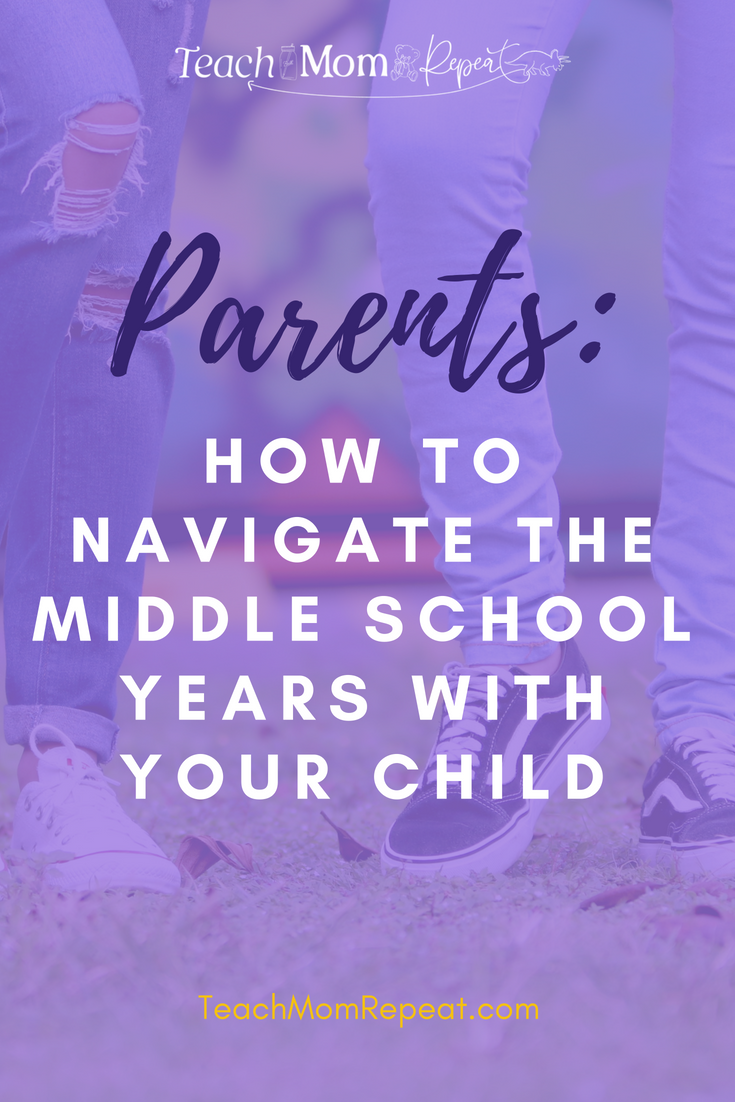
Managing their time is also a major pitfall for many middle school students. They are naturally becoming more social and now have the opportunity of extracurriculars that they didn’t have with elementary school. Our building provides students with a planner to write down all their assignments and activities. Keeping up with this is something we as teachers try to oversee, but it really helps when parents do as well. It will also keep you informed of what they are doing in school. Again, show them how you do this. Even if you keep a calendar on your phone it helps when they see that this is a lifelong skill and there is value to learning how to manage our time. There is nothing worse than seeing a student’s organizer with the word ABSENT written across all the squares. They now have nowhere to write what they actually missed on that day. This is also an indicator that they don’t understand the use of a planner or choose to use it for its true purpose. Once they do use a planner for its true purpose they may need help executing the follow through. It may be written down, but are they completing the tasks and making time for the activities they listed? Helping them find a routine for school-related tasks can be helpful. Remember it’s all about showing them what it can look like and then let them take responsibility for these tasks. If it starts to fall apart, revisit why it’s not working, and then look at ways to make changes to help the system work again.
Be involved vs. over-involved
Technology has given teachers so many new, easy ways to communicate with parents that were never there in the past. Some teachers embrace this and some let the district or building make communication. Either way look for how you can stay up to date with what’s happening in your child’s classrooms. Please read the newsletters! This is a great time for everyone in the family to sit down with their planners and write down important events. Schools are also posting grades online in a way that allow parents and students access. Make sure you know how to access these sites. There are often options for adding additional contact information and for alerts when your child has missing assignments or low grades. THIS IS NOT AN INVITATION TO TAKE CONTROL. Here is a perfect example of how you can help your child gain more responsibility. This is not the time to do it for them. Ask them questions. If they don’t know the answer help them prepare a conversation to have with their teacher. Let them go to the teacher before you do. This is what they need! They need that opportunity to take care of a situation on their own, but if they haven’t done this before it’s good to practice at home first. Roleplay, you be the teacher and let them ask their questions. Even the most approachable teacher can still be intimidating simply because they are the teacher. Keep in mind our end goal as parents are to grow and encourage capable adults.
Add Value to Their Middle School Experience
School today looks a whole lot different from what we experienced, but this is not a bad thing. Often times I see parents struggle with this, it looks so different they throw their hands up and choose to disconnect with that part of what their child is doing. Middle school is often the time that parents stop attending open houses or conferences or really talking to their child about school at all; until there is an issue. Many teachers have embraced the way technology allows parents to peek inside their classroom on a daily or weekly basis. When you ask your child about something you read or saw from these opportunities it adds value to what we as teachers are doing in the classroom. Kids translate that as you care about what’s happening there and recognize the importance of school. When you ask “how was school today?” the common answer will be, “good.” When you start the conversation with, “tell me more about that immigration project you worked on today,” a one-word answer is a lot harder to give.
Middle school is full of new things, but those things don’t have to be negative. Let’s give kids a joyful memory of middle school. I know that’s my goal! Are you a parent of a middle schooler? Share in the comments what has worked for you and your child. Are you a middle school teacher? Tell us how you help parents and students navigate this changing season of childhood.

by Carly Black | Jun 9, 2017 | Home Solutions, Mom Solutions, Schedule
Most people consider a calendar year from January to December. However, for the teacher, a year starts in late August and runs to the first week of June (or end of May if you’re lucky.) That makes the summer months our “off-season,” or what I now refer to as my “stay-at-home-mom season.” The time schedule each day as a stay at home mom is very different, but the structure looks mostly the same.

Skills Training
One down and one to go. On a whim this past spring break I decided to potty train the three-year-old. We had planned to stay at home for most of the week, making it an ideal opportunity. In my classroom, I have learned the value of front-loading material to help students learn faster. After implementing valuable advice from a colleague, who explained that her toddler sits on the toilet while the water runs helping him feel the urge to go, we introduced potty sitting before bath time to give them the basic concept. Even though I consider myself a pretty good teacher of reading, I honestly thought to teach my kids how to use a toilet would be a tougher monster to tackle. Turns out the front-loading concept works well for potty training, also. After two weeks of timers and a few extrinsic motivators (new toys), my son is accident-free! He’s even waking up dry in the morning.
Our daughter, who will be turning two for the kick off of summer is next. It’s probably a little early for her, but I’m hoping her desire to do everything her big brother does will motivate her.
Mealtime
During the school, day lunch is generally a time to relax and engage in adult conversations. However, during the season of stay at home mom I become the cook in charge of feeding everyone. I appreciate the power of planning and being prepared. Throughout the school year, I have been in the habit of meal planning and grocery shopping on Sundays to help. Usually, these shopping trips consist of dinners for the week and some breakfast and lunch staples. Rather than standing in the kitchen looking for something to throw together ten minutes before the meltdown begins I prefer to have a plan. I don’t consider myself a cook, so the throwing food together doesn’t usually turn out well. I like to follow a recipe, and like any good collector of ideas, I’ve turned to Pinterest for toddler meal options. If I don’t it might be PB&J sandwiches every day. Some days we have exciting, specially crafted lunches, some days we need to pack our lunch to go, and some days we are going to eat a quick PB&J. However, most days I do not get to have enjoyable adult conversations, instead, I get to belly laugh with my kids.
Prep Period
When in a stay at home mom season prep time is also known as nap time. For the kids, not me. My actual planning period is usually more of a marathon. How many things can I check off my to-do list in a short 42 minutes? Thankfully, nap time usually lasts much longer than 42 minutes! As long as I can get both kids down at the same time I can often count on about 2-3 hours. So much can be done in that amount of time!
In order to really make the best of this time let me again suggest planning and preparedness. Unlike a school day, where parent phone calls or other emergencies could pop up, a day of being a stay at home mom can be much more predictable. Decide which days you’d like to complete the usual cleaning or organizing tasks and then save time for yourself. Work on a personal hobby or sit down to a good book. Dedicate this hour to self-care, you deserve it.
Field Trips
To jump-start our summer we renew our Columbus Zoo family pass each year. The great thing about zoo membership is that they allow you to receive more benefits than just free admission to the zoo. We are able to purchase half-price tickets to a number of other zoos giving us the option of Cleveland and Akron, as well. I’d like to visit Toledo Zoo this coming summer.
Teachers, did you know with proof of employment your ticket to COSI is now FREE? I would have been making trips to COSI a long time ago with that information. With so much to see at each of these fun, kid-friendly places there are not enough days in the summer to experience it all.
The dress code is much more casual, the time is more flexible, and the kids aren’t being graded, but the day still has the same moments of learning taking place, belly laughs to break the monotony of routine, and time to reflect on how you’re so in love with this mom gig.
Teacher-Moms, share what you love about making the transition to stay at home mom.

